Thank you for visiting! By the way… any links on this page that lead to products on Amazon and other stores/partners are affiliate links Aquarium Store Depot earns a commission if you make a purchase.
An African Cichlid Tank in my opinion has always been an underrated aquarium. Usually many hobby or pet owners will look to freshwater community or saltwater tanks, but an African Cichlid tank offer the great balance of the ease of freshwater tank along with the vivid colors of a saltwater aquarium. One of the biggest differentiating factors, especially with Mbuna Cichlids is how incredibly active they are. An African Cichlid tank is a great choice for a beginner and for those who like the color of saltwater fish, but may not feel ready for the cost and additional upkeep of a saltwater aquarium. In today’s blog post, I will provide an overview on:
- What are African Cichlids?
- Care Requirements
- Plants in an African Cichlid tank
What are African Cichlids?
Cichlids are a diverse group of freshwater fish from the biological family Cichlidae. There are over a thousand official species and some scientist in the field believe there may be thousands more! They are also known as secondary freshwater fish because their distant relatives originated from the ocean. Cichlids are split into two groups: Central and South American Cichlids or New World Cichlids and African Cichlids.
African Cichlids come from three lakes in Africa – Lake Malawi, Lake Tanganyika, and Lake Victoria. The most popular of these cichlids placed in African cichlid tanks come from Lake Malawi.
Lake Malawi
Lake Malawi Cichlids are rock-dwellers and should live in a rock environment. They are split into several species – Mbuna, Haps, and Peacocks. Mbuna are the most active and aggressive of the three. They are very colorful with the dominant male being the most colorful. Aggression is typically curbed by overstocking, frequent feeding, and by not putting in fish groups with similar coloring.
Haps are moderately aggressive fish with some Haps being very large. For some Haps, at least a 75 gallon tank would be needed to house them long-term. They are piscivores, which means they prey on small fish – particularly smaller Cichlids. Because of this, it is not a good idea to house these fish with anything small enough for it to swallow.
Peacocks are the most peaceful of the three species. They are most suited for a community type of aquarium. They are not compatible with Mbunas due to Mbunas more aggressive nature. There are examples of success in mixed african cichlid tanks, but even if successful, the Peacock typically will not grow as fast, will end up being less colorful, and may not live as long.
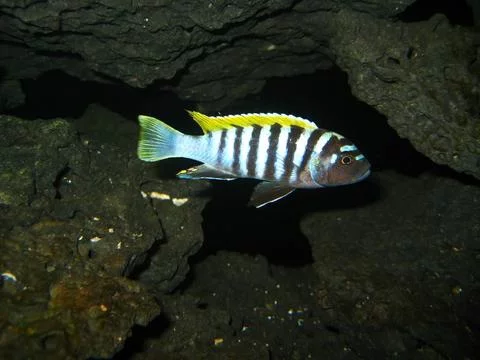
Lake Tanganyika
Lake Tangayika Cichlids are broken down into three groups – shell dwelling lamprologus like Lemon Cichlids, rock dwelling cichlids like Calvus, and large cichlids like Frontosa.
Shell dwelling Cichlids have a good number of positive features going for them. They are small in size, peaceful behavior, hardy, breed easily, and are easy to keep. Rock Dwelling Cichlids like Calvus are solitary hunters with slender large jaws used to suck smaller prey out from rock crevices. Frontosas are the feature fish when it comes to Lake Tanganyika cichlids. They are usually known for being kept alone in an African cichlid tank, but have been known to be kept with large Tanganyika fish like Calvus and Compressiceps.
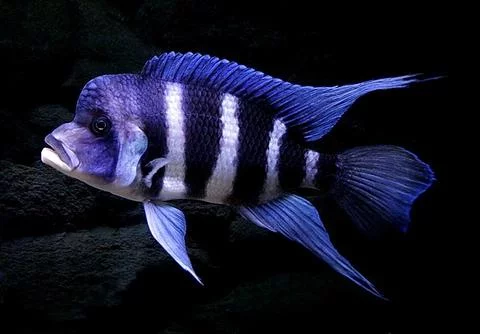
Lake Victoria
Lake Victoria Cichlids are the least known and popular of the three lake Cichlids. There is a lack of hobbyist literature available which makes Victorian cichlids sometimes difficult to identify. They are in general naturally aggressive fish. Some can mix with Mbuna and Peacock cichlids. Some of the most popular fish are Pundamilia Nyererei, the Zebra Obliquidens, and the Kyoga Flameback. A lot of secondary research should be done with this species of fish given the lack of information in the hobby.
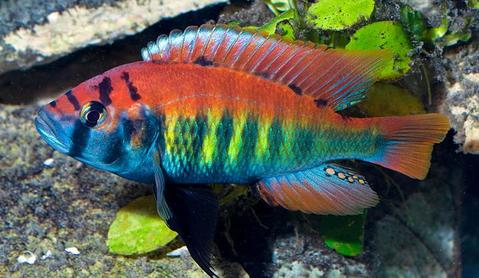
Care Requirements of Their Tank
We are going to start going over care requirements. Check out our video below from our YouTube Channel. We go into more detail below so follow along.
Tank Size
When it comes to any freshwater fish species and aquarium setup, bigger is always better. You will have more water volume to make your tank stable and more room to curb aggression. However, not everyone wants a massive tank. Cichlids do get large and are territorial.
The minimum for most African cichlid species is going to be 55 gallons. Longer tanks are better than tall as many cichlids are mid-level or bottom-level swimmers. Always go for a wide vs taller aquarium.
Water Requirements
All African Cichlids should be kept in water with a pH of 7.5-9.0, a water hardness from 10-20 dH, and a water temperature between 77-82°F.
The actual ranges of the African Rift Lakes are:
Lake Tanganyika — 7.8-9.0
Lake Malawi — 7.4-8.4
Lake Victoria — 7.2-8.6
Since all African Cichlids appreciate this higher pH, these are one of the few freshwater species whose aquariums may be decorated with marine coral, sand, and rock which will push the pH and buffer the water. In some instances it may be necessary to buffer water to reach these higher pH levels. There are various Cichlid Buffer additives available in stores that can be used or Cichlid Salts.
Filtration Requirements
A Cichlid aquarium needs to be well filtered. Overfiltration is actually encouraged in an african cichlid tank as it is typical to purposely overstock them to curb aggression among tank mates. In addition, Cichlids are messy eaters and even messier excreters. Aeration is also very important since Cichlids require well oxygenated water.
Because of the added demands of African Cichlids, dual filtration is recommend. Dual canister filtration is commonplace for African Cichlid keepers. In larger tanks, an overflow + sump + wet/dry setup is used to handle the bioload and flow requirements of the tank. Your goal is to have 8-10 times gallon per hour flow filtered per hour. So for a 55 gallon tank, you are looking at a goal of 550 filtered gallons per hour from your filtration system.
You can be fine with less filtered per hour if you have a high capacity canister like a BioMaster Thermo or Eheim Professionals, but you may need to supplement flow with powerheads to keep the flow strong in the tank in order to prevent dead spots within the tank.
The Pro's Choice
The top choice among professional aquascapers. German engineering and equipped with an intregrated heater.
Rock Work
Rock work is an important consideration and will vary depending on what species of African Cichlids you decide on. For Mbunas and other rock dwelling Africans, you will want to have rocks with lots of holes and cevices. Rocks will cover most of the bottom of the tank for these types of fish. Texas Holey Rock and lava rock are two good examples of such rock. For Haps and Peacocks and other open swimmers, there should be more open water to mimic their environment. Other rocks that you can consider would be slate, limestone, and even ocean rock. Making sure your rock is more smooth should be considered as rough rock can hurt your African cichlids.

Substrates
All Cichlid tanks should have a sand substrate in an african cichlid tank. This most closely mimics their natural environment. Many Cichlids naturally feed by grazing through the sand, others cleanse their gills, while others dive into it or build nests. Some hobbyists have been known to acquire substrates from golf courses, pool shops, or home improvement stores. These can save you money when building an african cichlid tank, but do some research before placing in your tank to ensure you have an aquarium safe substrate.
Within the aquarium industry, there are substrates available that will work with Cichlids, particularly aragonite sand used in marine tanks and Tahitian Moon Sand.
Boosts pH
Aragamax is great for African setups as it keeps pH and hardness levels stable
Diet
Diet for your African Cichlids will depend on the type of Cichlids you have. Africans can cross all the food groups (herbivore, carnivorous, omnivores, and micro predators) so it is critical that you know what group your fish belongs to. Spirulina is a general good food to fish all fish since it has outstanding nutritional quality and is made up of 65-70% protein.
Supplemental foods for herbivore fish would be peas, romaine lettuce, and spinach. For fish carnivorous fish, brine shrimp, shrimp pellets, and krill would be good meat supplements. Fish with yellow, orange, or red will need to be feed foods with lots of pigment so keep their colors optimal.
A stocked Cichlids tank need to be feed frequently, but not overfeed. Maintaining this balance will curb aggression. The recommended would be 3-4 times a day but only what they can eat within 20 seconds or less. Overstocking and overfeeding are the primary reason why we recommended extra filtration for the tank back in the filtration section. Overfeeding can lead to excessive nitrates or bloat for your herbivores. Feed frequent, but do not overfeed. A well feed Cichlid is a less aggressive Cichlid.
Food Recommendations
Below are several recommended staple Cichlid foods
New Life Spectrum Formula Pellets – The Benchmark in the Industry
New Life has been doing top notch fish food for years with scientific research behind each of their formulated foods. You can’t go wrong with them and their color enhancing Cichlid pellet food.
New life is scientifically backed and designed exclusivity for Cichlids
Cobalt Aquatics Probiotic Enhanced Flake Food – The Best Flake Food
Cobalt Aquatics has really made some moves in the industry with probiotic enhanced foods. This flake food offered by them is arguably the best African Cichlid flake food available on the market. It’s a works great in combination with New Life’s pellet food.
With probiotics and specially formulated for Cichlids, this is bar none the best flake formula available for your Africans
Hikari Cichlid Excel Pellets – Specially Formula for Plant-Eating Types
Cichlids eat a good amount of greens. The Hikari Cichlid Excel Pellets by Hikari focuses on spirulina with vitamins and materials to provide a highly nutritious pellet. Combining this pellet food with the other two, you should everything you need to provide a quality diet to your African Cichlid community.
A spirulina based pellet food. Loaded with vitamin and materials. Combine with the other two foods
In the Tank
Live plants can be kept successfully with African Cichlids. You may have heard from others, from forums, or your local fish store that you cannot but it is very possible to keep plants. There are a few things to keep in mind if you want to attempt to keep plants with African Cichlids. First, not all plants will be able to tolerate the high pH of an African cichlid tank. Second, not every plant will be compatible with the different types of African Cichlids available.
Specialized freshwater lighting systems will need to be considered if you choose to have plants in your African cichlid tank. While lighting requirements will vary for different plants, the proper spectrum of light needs to be provided to them. You will need lights that emit in the blue and red end of the light spectrum. These are wavelengths of 450 and 680 nm. Check out my post for planted LED systems, to see systems with the proper wavelengths.

Plants have tighter requirements to prevent algae outbreaks as well. Regular water changes to keep nitrates below 50 ppm and the use of bristlenose plecos will help with algae. Keep in mind; however, that plecos will eat soft plants.
You have to purchase the right african cichlids for your tank to ensure success with plants. You will have the greatest success with non plant eating african cichlids like peacocks and the hardest time with Mbunas.
The final factor is dealing with the digging of cichlids. Plants can be uproots with the digging activities so plants need to be fastened to prevent uprooting. Java fern should be tied to rock with fishing line and other plants should be potted or wedged in between rocks.

Where to Purchase?
Getting them at your local fish store would be the first step. I would highly recommend that you join a aquarium club to learn more about the quality local fish stores near you. Some people, however, do not live near a quality local fish store. In those cases, pushing African Cichlids online would be the best way to obtain them. There are a few out there that are worthwhile:
Worldwide Tropicals
Seller on Amazon who sells various African Cichlid livestock
Mike’s Cichlids
Family owned breeding facility that specializes in high quality Cichlids
Imperial Tropicals
WYSIWYG African Cichlids
Additional Reading and Resources
As African Cichlids keeping has been around for many year, there are a wealth of resources and even books for you to enjoy and read. Here are several I would recommend and you learn more about them. All are easily found on Amazon:
- The Beginners Guide to African Cichlids – If you are just getting started, this will give you a start overview.
- The Cichlid Aquarium – A oldie but goodie. In the same form as the The Reef Aquarium, this is timeless knowledge.
- Lake Malawi Cichlids (Complete Pet Owner’s Guide) – A specialized book all about Lake Malawi Cichlids. If you are looking for a Mbuna or Peacock tank is this is a solid read.
Closing Thoughts
African cichlids are highly rewarding fish to keep. We hope this article was useful in planning your African Cichlid tank. If you liked this post, check out the recap video from our YouTube Channel below. Subscribe if you like it. I hope to see you again.
- About the Author
- Latest Posts
I’m thrilled that you found Aquarium Store Depot! Here you’ll find information on fish, aquariums, and all things aquatics related. I’m a hobbyist (being doing this since I was 11) and here to help other hobbyists thrive with their aquariums! I adhere to a high quality Editorial Process and Review products with real life field usage and practical analysis.



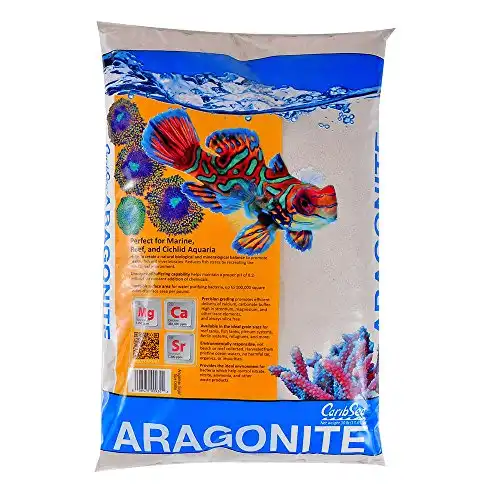

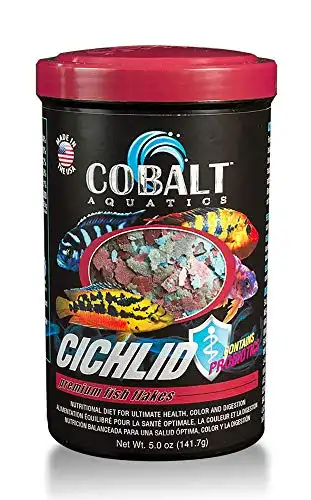





I need to know what type of chiclid this is
I will email you the picture when you reply